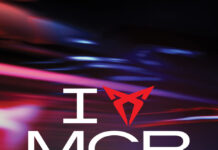A car’s registration plate might seem like a mundane requirement, but in the UK, it has become an area for customisation and creativity. Beyond personalised number plates, many car enthusiasts are enhancing their plates with eye-catching designs and features to make them stand out. These modifications, which include 4D plates, 3D gel plates, and other styling trends, allow drivers to add a touch of flair to their vehicles while adhering (mostly) to legal requirements. Here’s a closer look at some of the most popular methods.
1. 3D Gel Plates: Sleek and Stylish
3D gel plates are one of the most popular ways to add a premium look to a car’s registration. These plates feature characters crafted from a resin-like gel material that gives them a raised, shiny, and smooth texture. The reflective finish catches light in a way that’s both subtle and striking, making these plates ideal for drivers seeking an elegant upgrade.
- Pros:
- Highly durable due to their tough resin coating.
- Sleek, glossy finish appeals to those who value a modern aesthetic.
- Widely recognised and accepted under current UK regulations (when made to conform with DVLA standards).
- Cons:
- Improperly designed plates (e.g., with non-standard fonts) can risk fines or MOT failure.
- The shiny finish can sometimes appear overly flashy for conservative tastes.
2. 4D Plates: Bold and Eye-Catching
4D plates take the customisation trend a step further by adding laser-cut acrylic characters that protrude from the plate surface, creating a sharp and dynamic 3D effect. Unlike gel plates, the characters on 4D plates have hard, crisp edges, giving them a bold and high-tech look.
- Pros:
- Extremely modern and distinctive, perfect for those who want to make a statement.
- Long-lasting due to the use of durable acrylic materials.
- Offered in a variety of finishes, such as gloss or matte, to suit individual preferences.
- Cons:
- Must adhere strictly to DVLA guidelines to remain road-legal, including size and spacing requirements.
- More expensive than 3D gel plates.
- Risk of overstepping legal boundaries with unapproved colours or styles.
3. Coloured and Tinted Plates: A Flash of Personality
Some drivers opt for plates with subtle tints or coloured lettering to add an unconventional edge to their registration. Light smoked tints can make plates blend seamlessly with certain car designs, while colours like neon yellow or red for the characters can create a vivid contrast.
- Pros:
- Adds a unique flair without drastic changes.
- Popular among car show enthusiasts.
- Cons:
- Tinted plates are illegal on UK roads if they impair visibility or fail to meet reflectivity standards.
- Coloured lettering is not DVLA-compliant and is strictly for off-road or show use.
4. Show Plates: Creative but Restricted
Show plates allow for complete customisation, including unique fonts, colours, and designs that deviate from UK legal standards. They are commonly used for car exhibitions or private events.
- Pros:
- Total creative freedom for aesthetic or branding purposes.
- Can include logos, slogans, or unusual layouts.
- Cons:
- Illegal for road use in the UK; strictly for display purposes.
- Using show plates on public roads can lead to fines or prosecution.
5. Carbon Fiber Effect: Subtle Luxury
Carbon fiber-effect plates have become a favorite among car enthusiasts looking for understated sophistication. These plates feature characters with a textured carbon fiber pattern, giving them a high-performance, motorsport-inspired vibe.
- Pros:
- Offers a sporty look without being overly flashy.
- Compatible with UK regulations when properly designed.
- Cons:
- Limited customisation options compared to 4D or gel plates.
- The “effect” is aesthetic only; it doesn’t involve actual carbon fiber.
6. Border Designs and Emblems
Adding a coloured border or emblem (such as a national flag or car brand logo) can make a registration plate more personalised without straying far from legal requirements. Borders can be customised in various colours to complement a car’s paintwork or add a subtle pop of contrast.
- Pros:
- A simple and cost-effective way to enhance a plate.
- Less risky legally, provided the design complies with DVLA standards.
- Cons:
- Overly complex designs or additional graphics may render the plate illegal.
Staying Within the Law
While customising your plates can be fun and rewarding, it’s crucial to stay within the legal boundaries set by the Driver and Vehicle Licensing Agency (DVLA). UK regulations stipulate specific rules regarding font, spacing, and reflectivity to ensure plates remain easily readable for law enforcement and cameras. Non-compliance can lead to fines, MOT failure, or worse, the invalidation of your vehicle insurance.
Why People Customise Plates
The rising popularity of customised registration plates reflects broader cultural and personal motivations. For some, these enhancements are a way to express individuality or showcase their vehicle’s aesthetic. For others, it’s about standing out or creating a cohesive design for their car.
Whether you prefer the glossy sheen of 3D gel plates, the sharp edges of 4D designs, or the subtlety of carbon fiber patterns, there’s no shortage of ways to make your registration pop—so long as you keep it legal on the UK’s roads.







